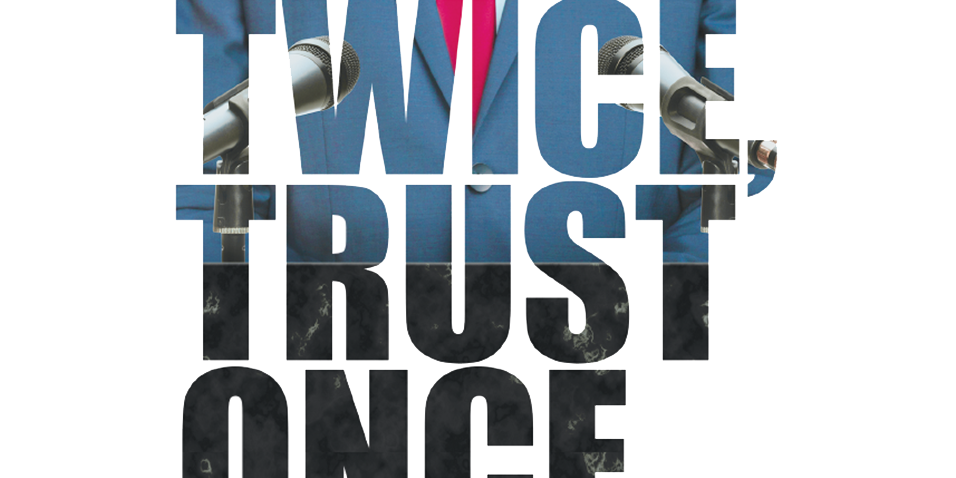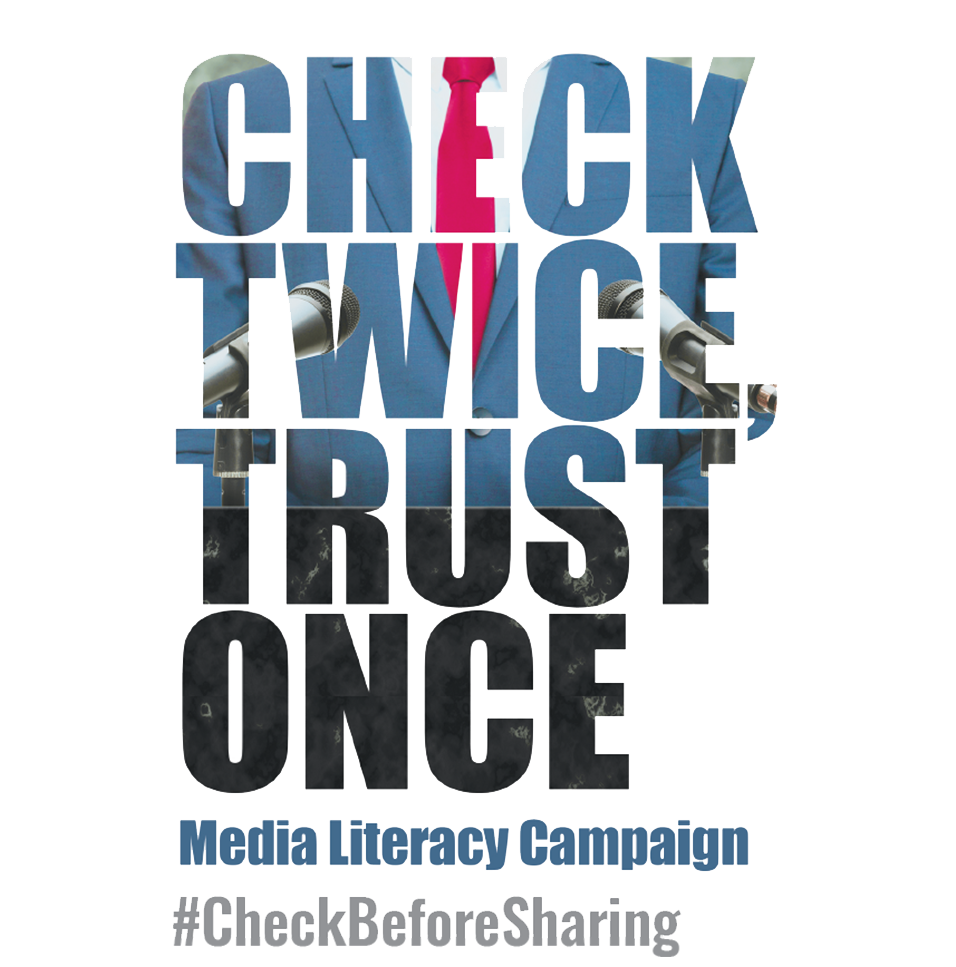
Findings of Survey “Mapping the level of media literacy in the Republic of North Macedonia 2019”
Age of respondents: 16+
The safety key is rarely
used!

Prior knowledge on a certain topic serves as the most common ‘filter’ that readers (51.7%) use to check the authenticity of a given information.
For 44% of respondents alternative way to assess whether the information can be trusted is a website layout. Whereas almost 43% of the respondents check the information by using other sources.
Only 1/3 of the respondents (32%) check whether the website domain is fake and 24% say they pay attention to the website’s security certificate.
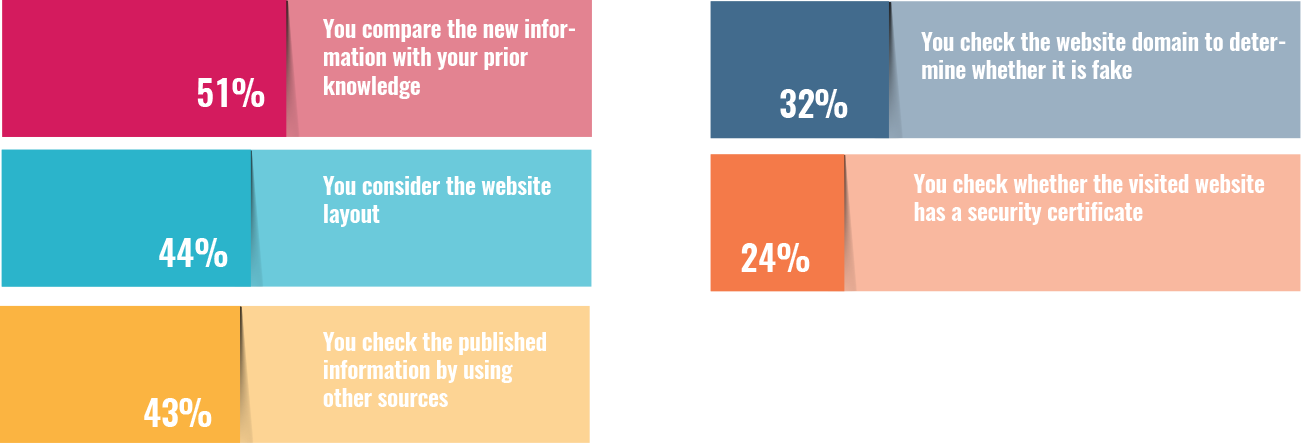
Negative content is present
on the
social media at large

Negative content often appears on social media. The respondents (61%) frequently notice misleading and false information posted for a certain purpose. Almost 60% of respondents often notice insults and humiliations based on religious and political beliefs. Approximately 58% frequently or occasionally find insults and humiliations based on ethnic origin or religious beliefs.
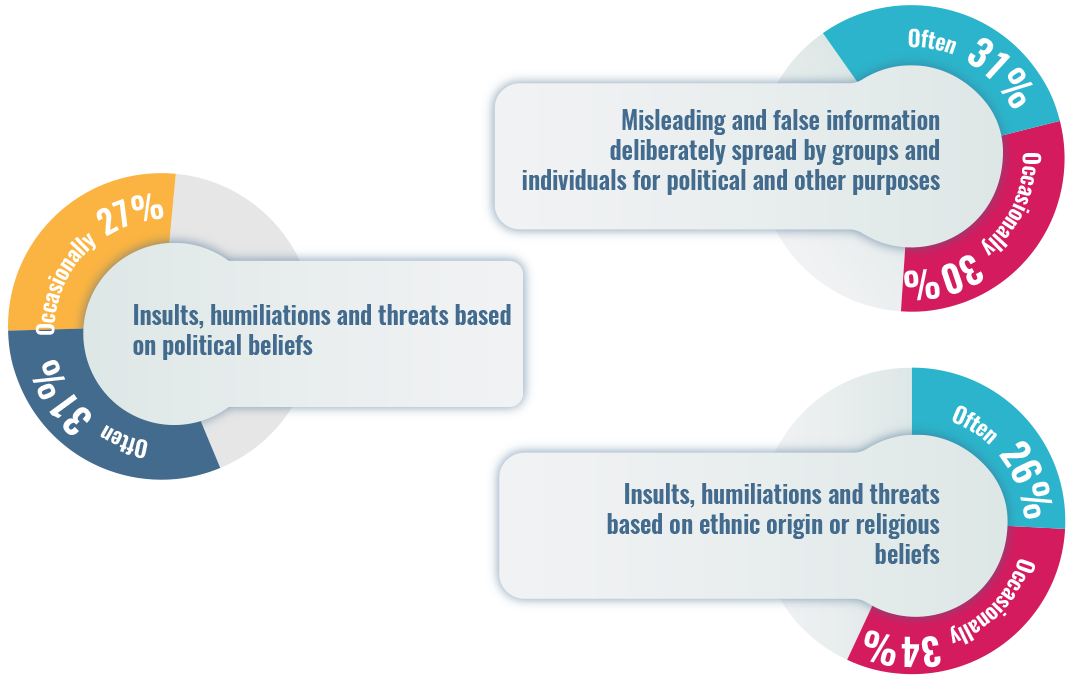

TV keeps predominantly
informing the public
Approximately 59% of the audience stays informed via television. Almost 36.9% of the audience gets information through the posts and comments of their friends on social media, while 27.7% are informed via news posted on social media.
How do you usually keep informed?
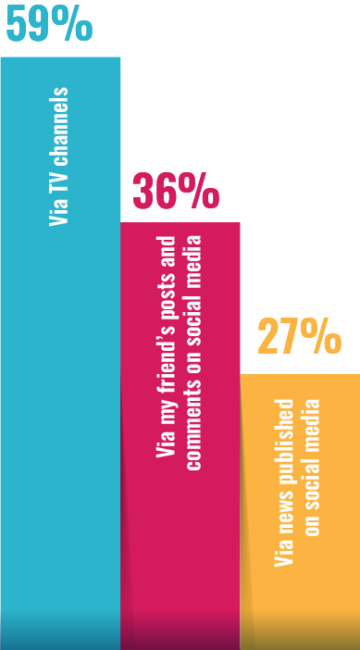
What do websites offer?
Approximately 54% of respondents often notice biased content on the websites. A significant number of respondents (43.7%) share an opinion that the websites often contain inappropriate content.
The largest portion of news published on the websites are politically driven

Portals often publish offensive content towards individuals and groups on grounds of ethnic, religious, gender, sexual and other characteristics

TV channels greater adhere to professional standards for reporting when freedom of the media is respected
Most of the respondents (72%) think that TV channels can be objective only if they are independent. Approximately 31% of the respondents trust the information provided by the TV channels. A high percentage of 68% share opinion that television affects the public opinion especially when it comes to political and social issues.

Where do people get their news?
Large portions of respondents still use television as a medium to stay informed. Domestic TV channels are increasingly followed; whereas the interest towards foreign television channels has decreased. Younger audience uses social and digital media as a main source of information. Additionally, conversations with relatives, friends and colleagues are frequently considered as a source of information.
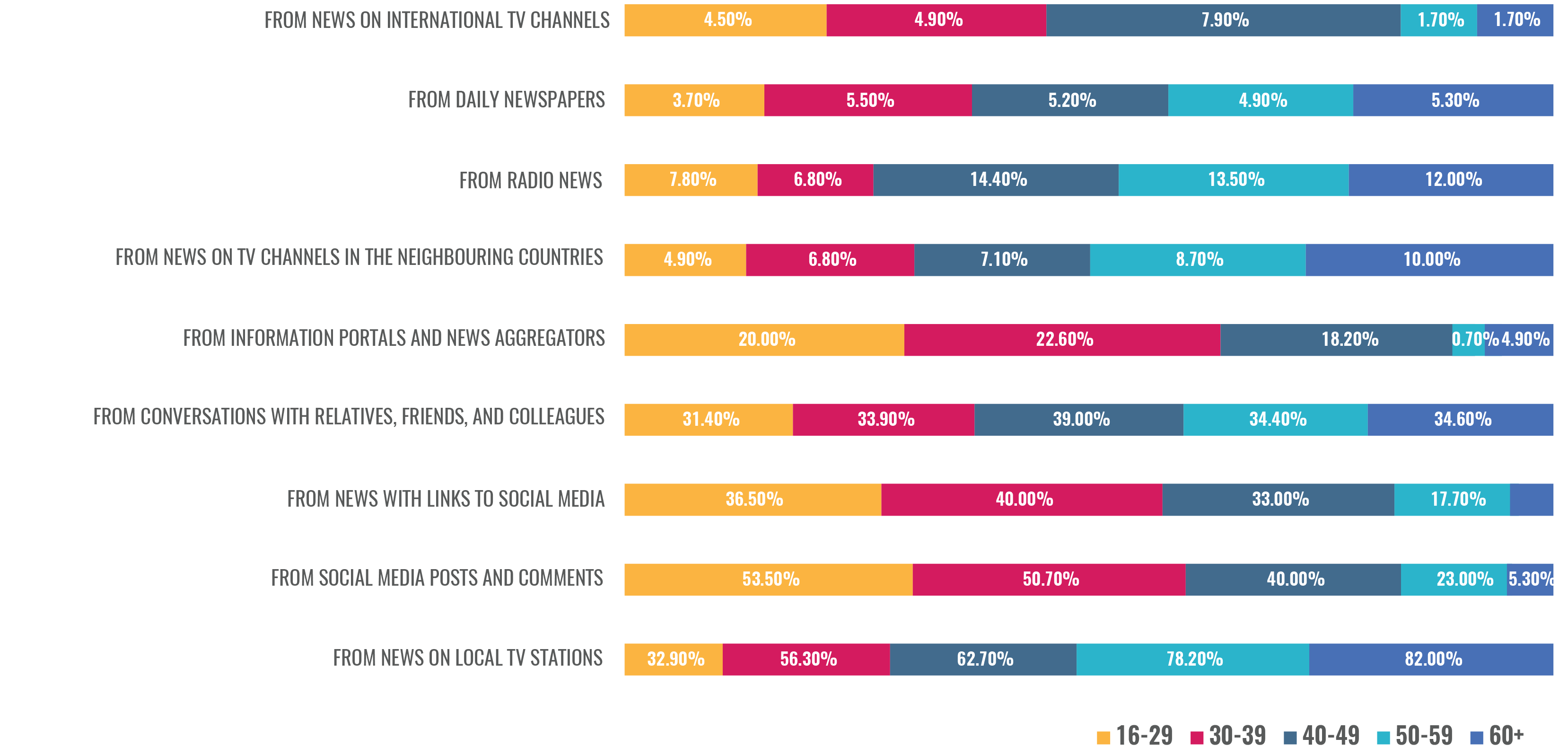
Information authentication
Small portion of respondents check the news or the information and compare various news items. Respondents generally stay informed from the source they trust. However, a significant portion of the respondents discuss the news items with their family members, friends and relatives in order to make a conclusion based on other people’s opinion.
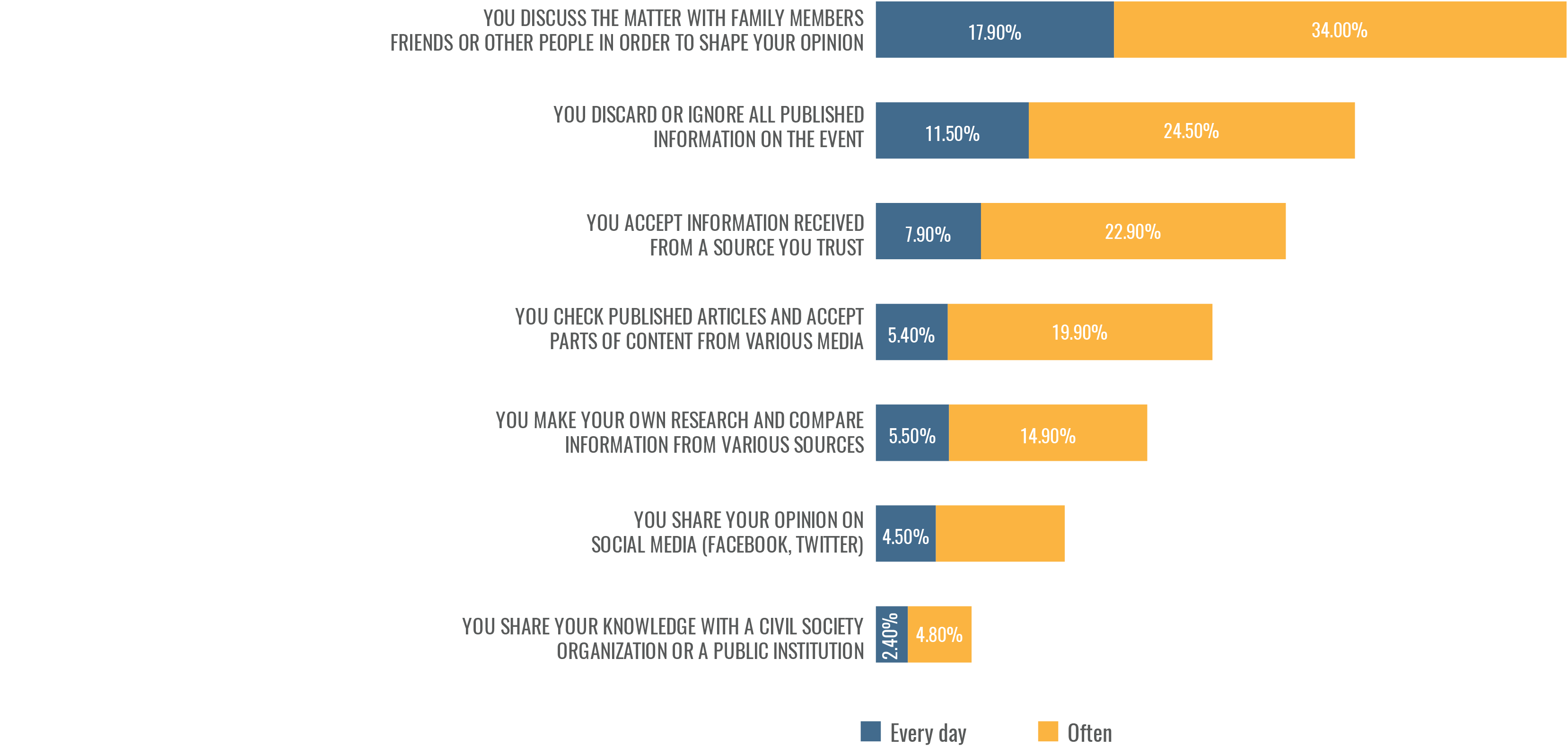
Use of media for public participation

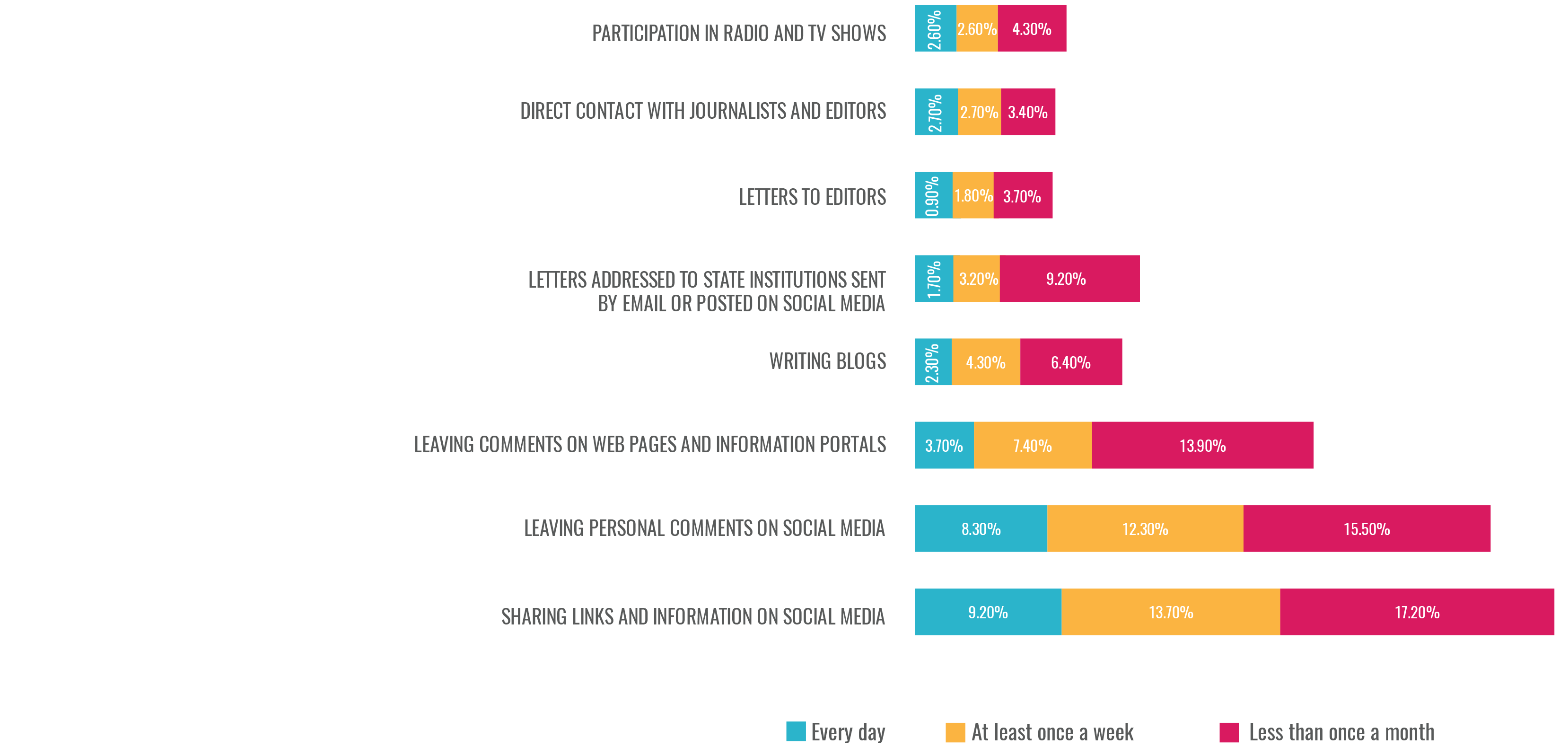
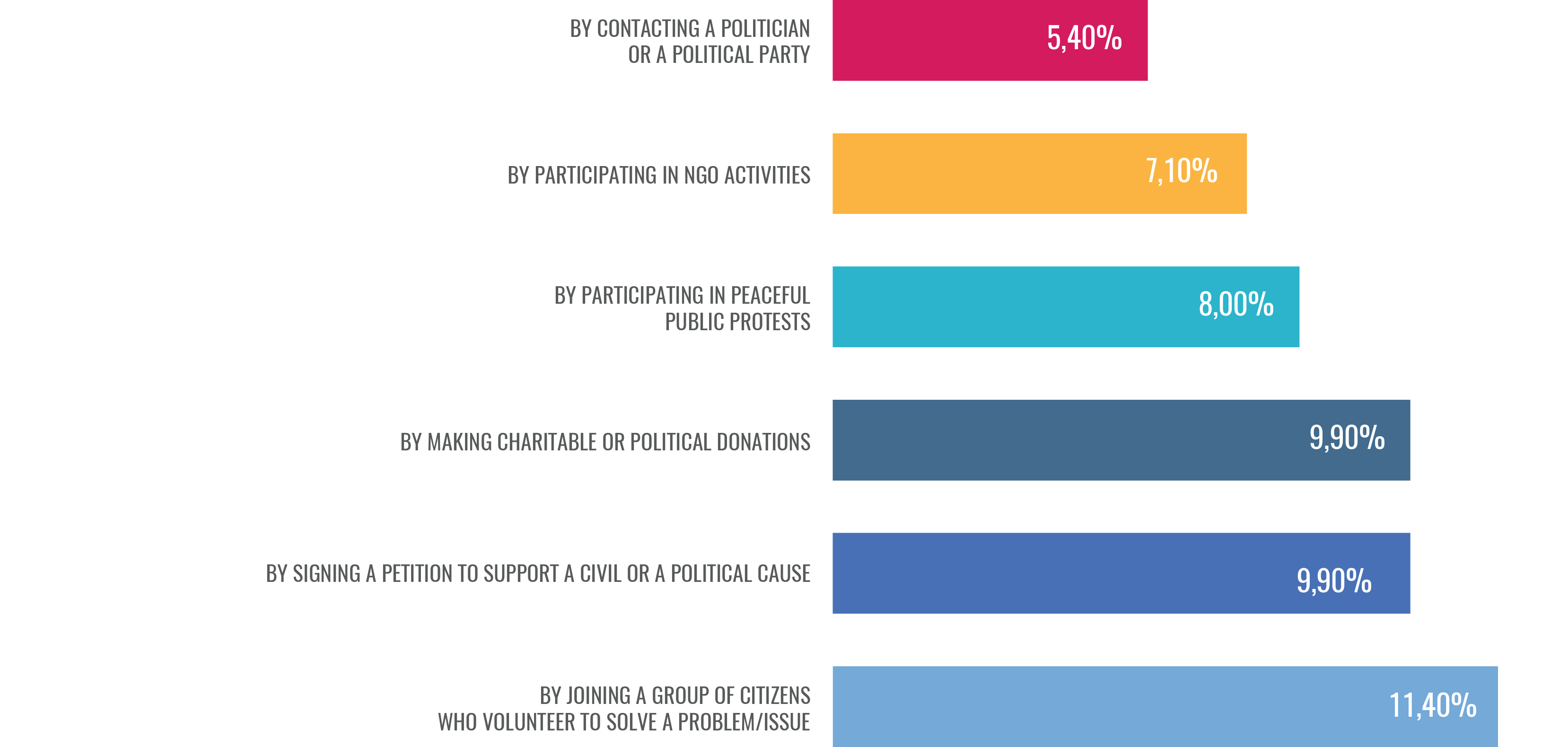
General forms of participation
An insignificant number of respondents on their own initiative are eager to join a group of citizens willing to find solution to a problem or an issue. In addition, an insignificant number of respondents gets involved in signing a petition or initiative in order to find solution for a particular problem, or takes part in peaceful public protests or demonstrations.


